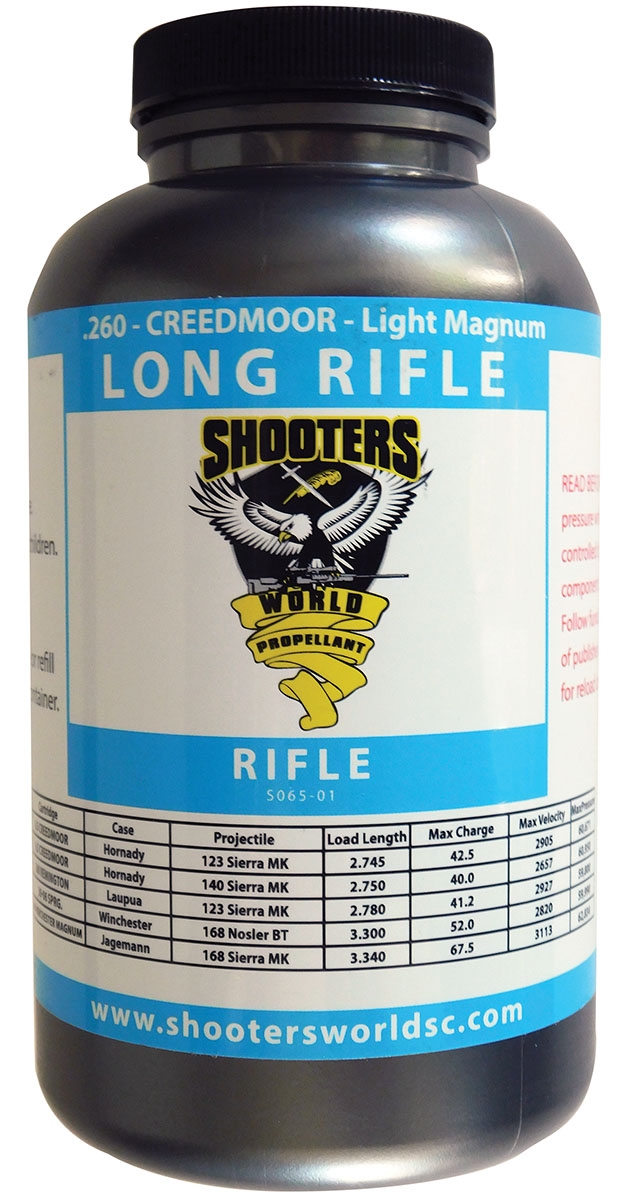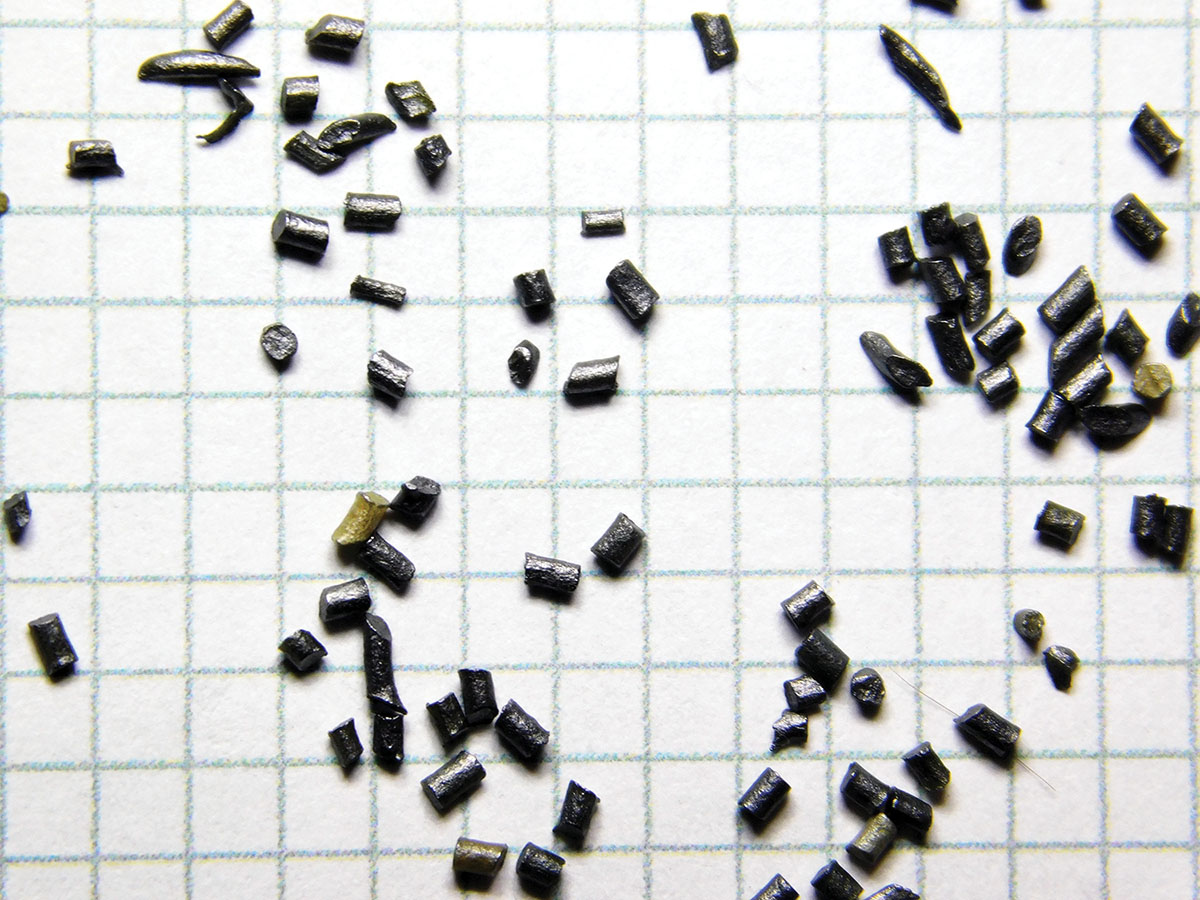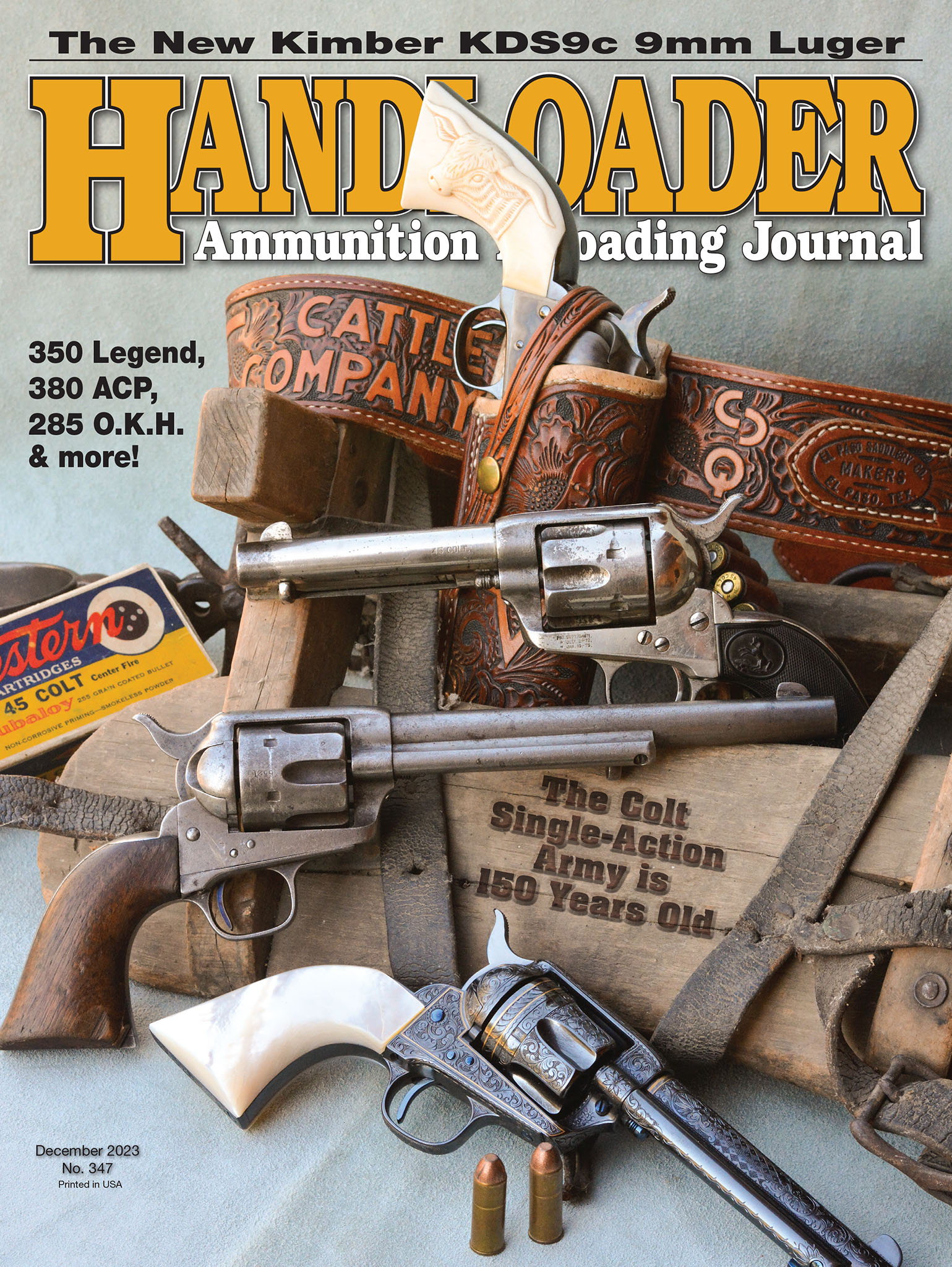Propellant Profiles
Shooters World Long Rifle
column By: Rob Behr | December, 23

To me, this latter system is a better depiction of general burn rates. Some powders are the same Original Equipment Manufacturer (OEM) propellants labeled for canister sale by different companies. An example of this was Western Powders Ramshot Exterminator and Accurate 2230. Production was later split between PB Clermont S.A. and St. Marks Powder, but originally both of the canister-grade propellants were the same PB Clermont product. When these two powders were depicted on a linear burn-rate chart, one was necessarily depicted as faster than the other, even though they were exactly the same powder. Secondly, many powders represent a family of canistergrade propellants that are all based on small burn-rate variations within a single OEM powder designation. An example of this is Winchester 296, Hodgdon H-110, Accurate 11FS and Alliant Power Pro 300-MP. Viewing this on a horizontal graph is a useful aid to understanding a powder’s burn characteristics.
I took you down this dull rabbit hole for a good reason. Shooters World has a great ballistics lab and they also provide a very accurate burn-rate chart. The chart indicates that Shooters World Long Rifle has a burn rate comparable to Winchester 760 and the now-discontinued Hodgdon H-414. This OEM family, which is sold in bulk as OEM powder WC 760, also includes Accurate 2700. Based on this chart, my first assumption was that Long Rifle was a double-base spherical. When I read the company’s description, I was surprised to see it was a single-base, short-cut powder. With that revelation, I saw a world of potential for Long Rifle.
In some circumstances, I am a big fan of double-base propellants. They offer great metering and advancements in chemical engineering have made them much more stable in extreme temperatures. The advantage that Long Rifle has over the spherical powders in a similar burn rate is that its bulk density, which is .9g/cc, is lower and more readily compressed to minimize powder migration within the cartridge. This powder has the potential for great accuracy in popular cartridges like the 6.5 Creedmoor.

Shooters World promotes Long Rifle as optimized for the 6.5 Creedmoor using medium and heavy bullets. Based on my burn rate testing, this also seems to be a very honest bit of advertising. Long Rifle really is a slightly faster challenger to H-4350 that offers efficient case fills and promises better velocity.
The load data provided by the company indicated that 40 grains was a maximum load with Sierra 140-grain MatchKings that produced an average velocity of 2,657 fps. I tested this load with 39 grains and perhaps sold Shooters World a bit short. The load was still able to generate 2,596 fps. Especially considering that it was a full grain under the company’s test load, it was still one of the closest approximations to published data I’ve ever seen in the often overstated 6.5 Creedmoor.
Honesty and gun writing are not always companions on the path of life. So, here is a little honesty. I took a pretty good fall with my Bergara 6.5 Creedmoor while hunting in the mountains last fall. At some point, I think it was the third bounce, I jammed the muzzle into the rocky dirt hard enough that the rifle became hopelessly plugged. It wasn’t until I got home that I even attempted to clean it. I was concerned about crown damage, but it looked okay under a magnifying glass. I had planned to rezero it with Long Rifle as part of my testing but abandoned that idea when the rifle refused to group. Testing it with HMS Trophy Gold bullets gave the same results. A new crown is in order. I have no idea what the accuracy would have been. I certainly had high hopes.
A word is needed regarding the powder’s appearance. Physically, the powder is dark gray to black with a noticeable layer of graphite to promote good flow characteristics. The powder grains exhibited wide variations in length, with about 80 percent running between .031 and .048 inch. The rest consisted of irregular longer cuts, the largest I found was .094 inch, and tails of varying lengths and thicknesses. By just looking at the powder grains, a handloader might expect inconsistent powder throws and higher extreme spreads, but none of that was evident in my testing. The powder is everything I have come to expect, in terms of metering and consistent velocity, from all of the Shooters World products I have tested.
Extensive loading data for Shooters World Long Rifle can be found at ShootersWorldPowder.com or LoadData.com.


